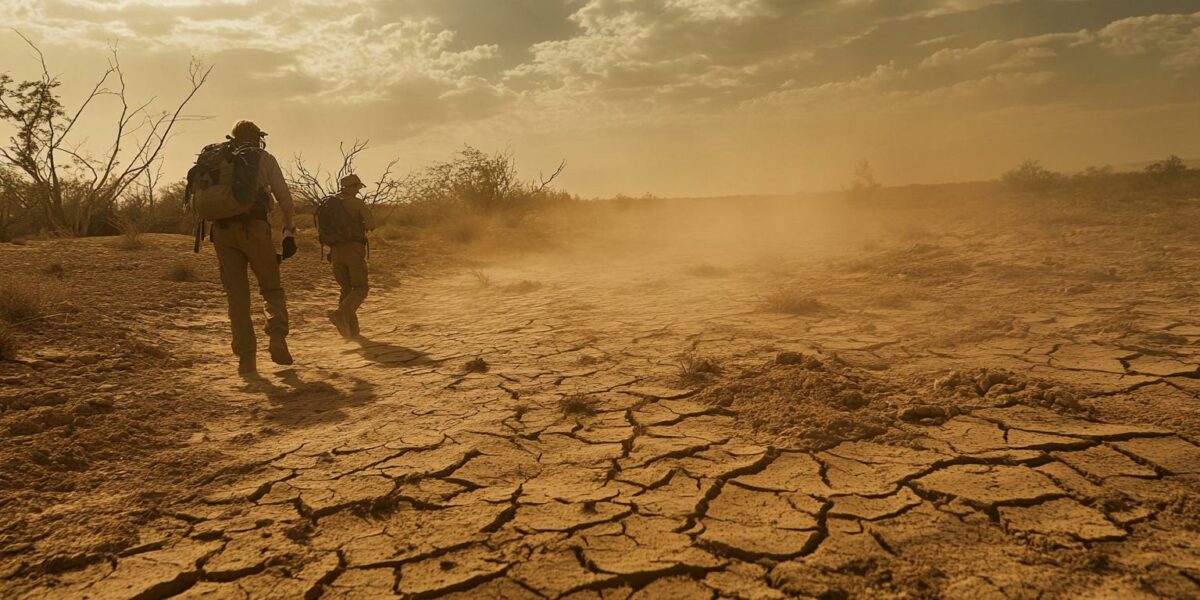Uncovering the Valley Fever Surge
In recent years, a significant increase in Valley Fever cases has been observed, particularly in California. This troubling trend has been linked to the dramatic shifts in climate patterns. Researchers have identified a connection between the rise in cases and the alternating periods of drought and heavy rainfall.
Valley Fever, scientifically known as coccidioidomycosis, is caused by a fungus prevalent in arid regions of the United States. The infection can lead to severe lung problems and, in some cases, can spread to other parts of the body, posing a critical health risk. The increase in reported cases is alarming and demands attention.
Experts from various institutions, including UC Berkeley and UC San Diego, have been studying this phenomenon. Their findings, published in respected journals, suggest that climate change plays a crucial role in the spread of this disease. The implications of these studies are profound and warrant urgent action.
Between 2014 and 2018, the number of Valley Fever cases in California nearly tripled. The trend has continued, with thousands more cases being reported each year. This increase aligns with the periods of extreme weather, reinforcing the link between climate conditions and the disease.
The Role of Climate in Valley Fever’s Spread
Climate change has led to more extreme weather patterns, contributing to the surge in Valley Fever cases. The West is experiencing a megadrought, the most severe in over a millennium, alternating with periods of heavy rainfall. These conditions create an ideal environment for the fungus to thrive.
Researchers have noted that the spores, which cause Valley Fever, become airborne during windy conditions or activities that disturb the soil, such as construction or agricultural work. People exposed to these spores, especially those with weakened immune systems, are at higher risk of infection.
Several factors contribute to the increased risk of Valley Fever:
- Age and Health: Individuals over 60, those with weakened immune systems, pregnant women, and people with diabetes are more susceptible.
- Geographical Location: Areas with dry, arid climates, particularly in California and Arizona, report the highest number of cases.
- Occupational Exposure: Outdoor workers, including farmers and construction workers, are at greater risk due to their frequent exposure to dust and soil.
The increased rainfall, followed by dry summers, facilitates the growth and dispersal of the fungus. As the soil dries out, the fungus breaks into spores, which are then inhaled by individuals, leading to infection.
Impacts on Public Health
Valley Fever poses a significant public health challenge. While many individuals recover without severe complications, a notable percentage suffer from long-term health issues. In some cases, the infection can spread to the skin, bones, joints, or brain, leading to potentially fatal outcomes if untreated.
The symptoms of Valley Fever, including fatigue, cough, fever, and muscle aches, are often mistaken for other illnesses, leading to misdiagnosis. This underreporting complicates efforts to fully understand the disease’s spread and impact. Public awareness and accurate diagnosis are crucial in addressing this health crisis.
Preventative measures are essential to reduce the risk of infection. Understanding the risk factors and taking precautions, such as wearing masks during dust storms or minimizing soil disturbance, can help protect vulnerable populations. Avoiding dust is one key strategy recommended by experts.
Health authorities continuously monitor the situation and provide updates on potential outbreaks. Their efforts are vital in managing the disease and informing the public about necessary precautions. The increase in Valley Fever cases underscores the broader impacts of climate change on human health.
Future Outlook and Ongoing Research
Ongoing research aims to further understand the relationship between climate change and Valley Fever. The findings indicate that as climate patterns continue to evolve, the incidence of Valley Fever may rise, necessitating adaptive strategies to protect public health. Researchers emphasize the importance of continuous monitoring and public education.
Recent studies have highlighted the persistence of fungal spores in harsh conditions, suggesting that they can thrive even during prolonged droughts. This resilience poses a continuous threat, especially as climate conditions become more erratic. The scientific community is working diligently to develop effective interventions.
The observations made in California can serve as a model for understanding similar trends in other regions. By studying these patterns, scientists hope to predict and mitigate future outbreaks. The collaboration between various institutions is crucial in advancing our knowledge and response strategies.
As the climate crisis unfolds, its impacts on health cannot be underestimated. The rising cases of Valley Fever are a stark reminder of the interconnectedness of environmental and human health. Addressing these challenges requires a concerted effort from researchers, policymakers, and the public.



AutumnEmpyrean6
Are there any ongoing studies or new treatments being developed to combat Valley Fever?
isaac
OMG, this is like something out of a sci-fi movie!
Hunter
Interesting read, but I’m curious, what are the symptoms of Valley Fever and how can one differentiate it from the flu?
Faith_Wanderlust
How accurate are the predictions linking climate change to the surge in Valley Fever cases?
andrew
This is alarming! Why isn’t this getting more media attention? 😟
leah
Is Valley Fever only prevalent in California, or are other states at risk too?
oliverwanderlust
Thank you for sharing this important information! 🌍
ellieillusion
Great article, but I wonder, how can we help mitigate the effects of climate change to reduce these health risks?
MiaZenith
Wow, this is terrifying! What can we do to protect ourselves from Valley Fever?